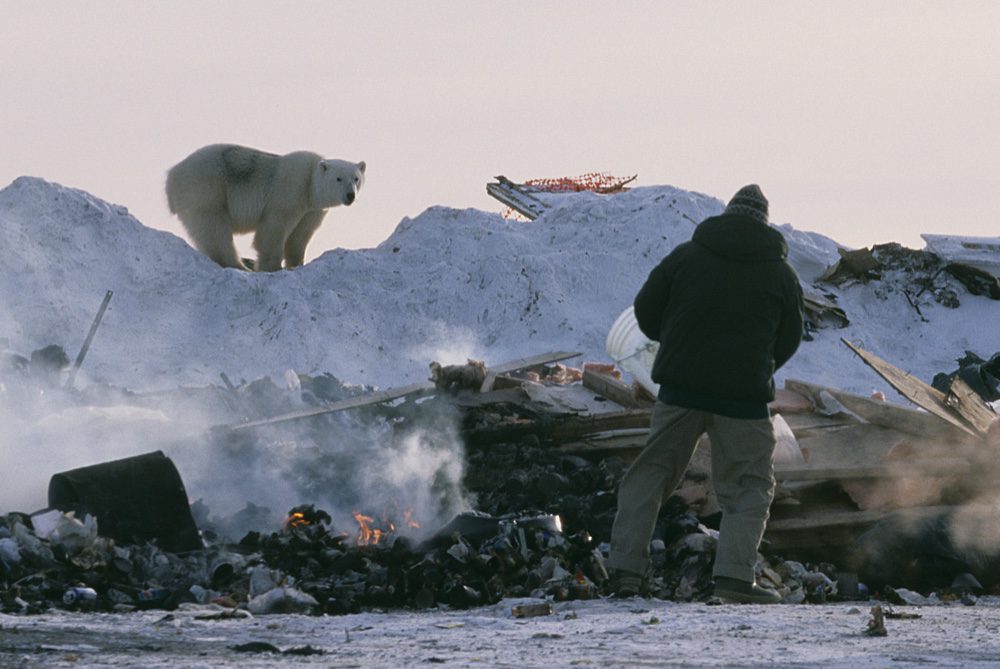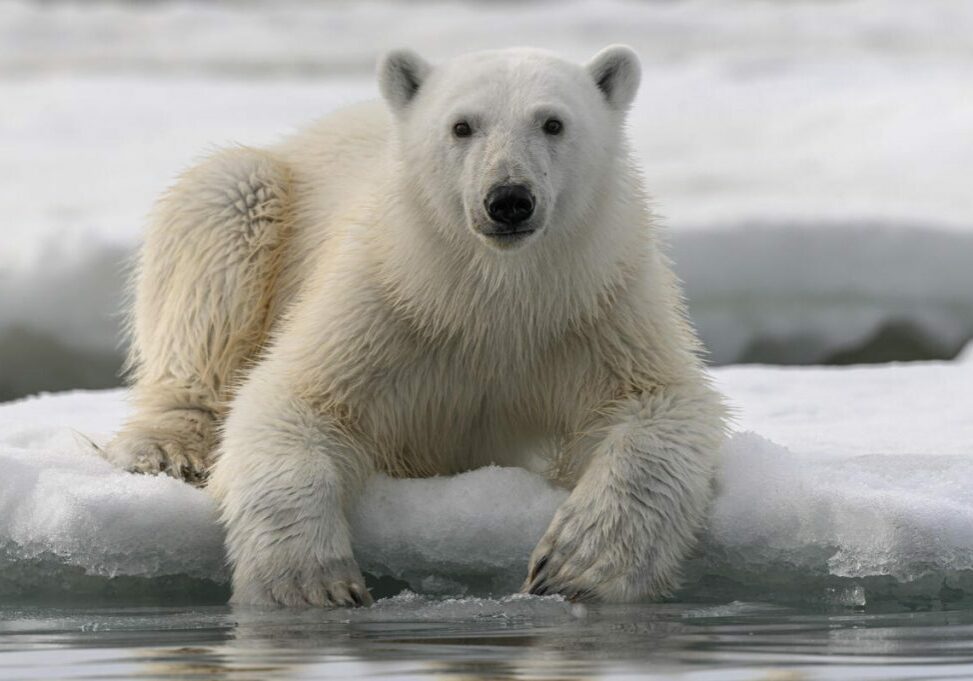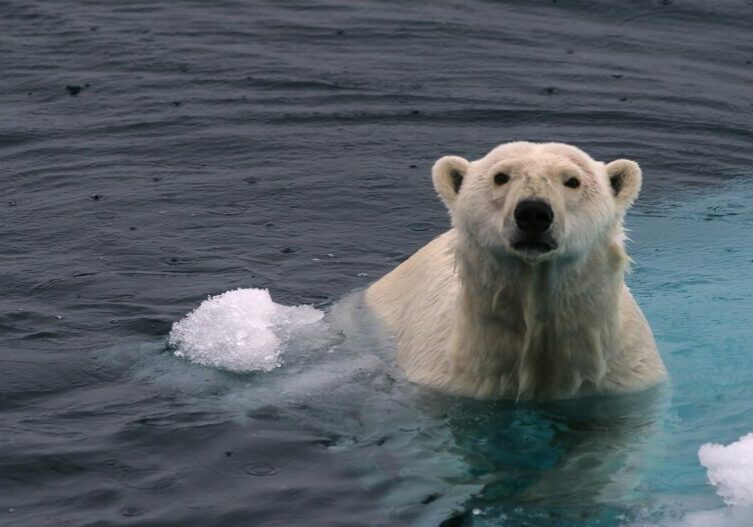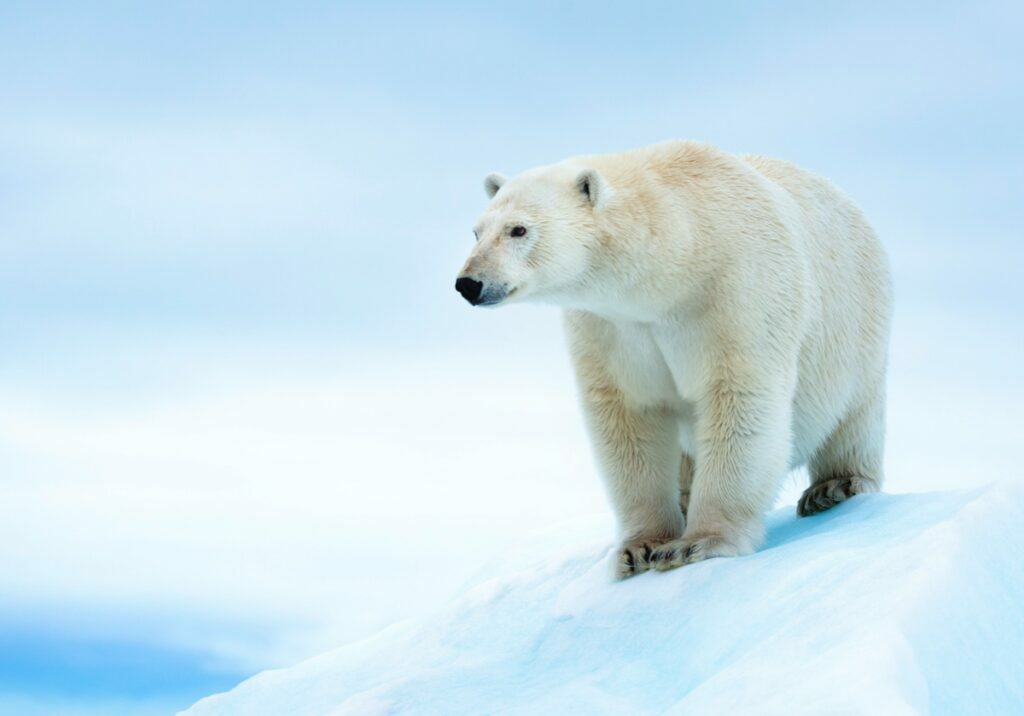Insights from new research that you’ve supported could enable people and polar bears to adapt to a warming Arctic.
Satellite ear tags bought with your support allow us to track the bears’ movements along the western Hudson Bay coast via satellite, providing important data about their behaviour and how they’re responding to changes in their environment.
The great thing about the ear tags is that they can be used on males and subadult bears – unlike tracking collars, which can’t be used on male bears as their necks are so thick. Because of this, we’ve only been able to collar females in the past, so males and youngsters have been under-researched.
The ear tagging is part of a collaborative project between the University of Alberta, the state government in Manitoba and the Canadian government’s environment and climate change department.
With their sea ice habitat breaking up earlier and forming later in the year, polar bears in western Hudson Bay have been spending more time ashore and coming into closer contact with human communities, posing a risk to people and bears alike.

© NATUREPL.COM / JENNY E. ROSS / WWF
Local wildlife officers attached the ear tags to bears that had been captured after straying too close to people’s homes. Captured bears are held in a secure enclosure until they can be relocated, either directly onto the newly frozen sea ice or on land away from town.
Researcher Erin Miller used the satellite-tracking tags to analyse polar bears’ movements as part of her master’s degree at the University of Alberta. “Using data collected between 2016 and 2021, I studied the movements of 63 conflict polar bears,” she says. “I analysed where the bears went after being relocated, what influenced their route, and tried to determine what factors affect the rate of incidents.”
One important finding was that bears captured later in the season were less likely to return to human communities during the same ice-free autumn period. “A polar bear would much rather be on the sea ice hunting seals than scavenging garbage in a human community. But a hungry bear with no other options will seek out alternative food sources,” Erin explains.
“Once a bear has been captured, the most effective strategy for reducing future conflict appears to be to hold it in a secure facility until the sea ice forms and then release it on the ice.”
As more polar bears are fitted with ear tags, the amount of data we can analyse is growing, and further research can be developed. This could provide crucial insights into how polar bears are adapting to their rapidly warming climate, and particularly how to avoid potential conflicts with communities.
“Every year, as the sea ice forms later and later, we’re going to have hungrier and hungrier bears. And they’re going to be more likely to enter town while they’re waiting for the sea ice to freeze,” says Erin. “With more data, we’ll be better able to identify specific things we can do to reduce these conflicts.”
Adopt a polar bear
You can do even more to support polar bears and communities to coexist by adopting a polar bear.
More to explore

Living with polar bears
As climate change causes summer sea ice to dwindle in the Arctic, hungry polar bears are increasingly coming into conflict with local people. But we’re helping them to live side by side more safely

